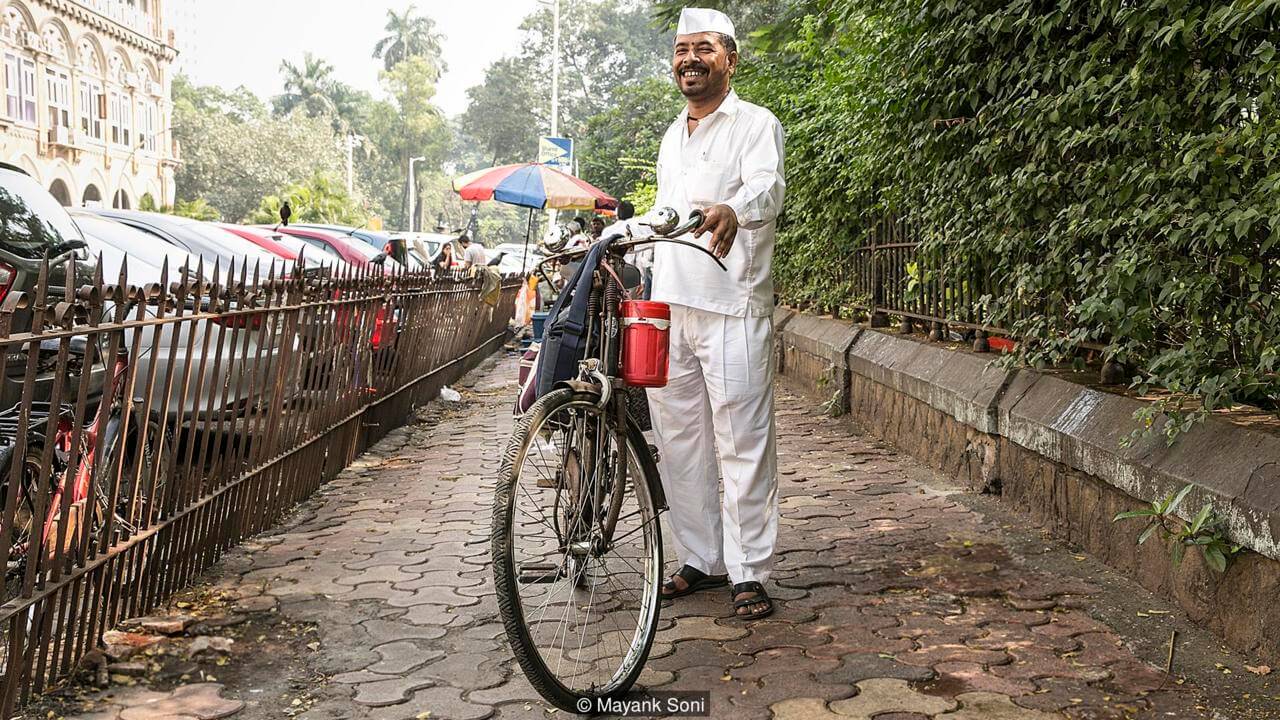What lunch looks like around the world
There’s a lot to learn about a country’s work culture from how people take their lunch. But what does a lunch break look like around the world? We asked people from across the globe how they take their midday meal. Scroll down for seven very different ways of eating al desko.
Mukul Paraekh / Mumbai, India


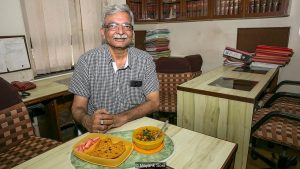
The delivered lunch
Carrot salad, masala roti and suka bhaji potatoes
There’s less time for lunch in Mumbai these days, says Mukul Paraekh, who usually eats lunch at his desk for a half hour in the afternoon. Paraekh, an office manager at an accounting firm, blames traffic jams and increasing pressure on workers in the city for this lack of time. Coming up with a speedy lunch is a top priority.
Though he usually brings lunch from home, there is also an alternative – and unique – solution in Mumbai. Delivered boxes of hot food, called tiffins, are couriered to the office from restaurants or people’s homes by delivery men known as dabbawalas.
Dabbawalas use a unique coded system to keep track of hundreds of thousands of meals, making fewer than 3.4 mistakes per million transactions.
“This secret coding system is passed on to their heirs and the business stays in the family for years,” 63-year-old Paraekh says.
Sarah Gimono / Mbale, Uganda



The street cart lunch
A ‘rolex’ made from chapati mixed with eggs
Another country where lunch-time speed is a top priority is Mbale, Uganda, where Sarah Gimono works as a project manager for a non-profit. She says eating as quickly as possible gives people more time for work, and lunch is rarely skipped.
“Dinner is less crucial in Uganda than lunch, when people also need to take a break from work,” says the 27-year-old, who typically takes 30 minutes for lunch and eats at a nearby restaurant. “The work culture in Uganda is so varied that at lunch, some people eat in the office and others go out to nearby restaurants and enjoy lunch as a team.”
Luckily for Gimono, who often does fieldwork at varying projects around Uganda, quick, inexpensive and tasty street food, like a rolex – a chapatti rolled (hence the name) around an egg mixture of fried onions and tomatoes – is easy to come by.
Vanessa Monroy / New York City, USA
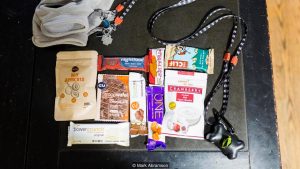


The not-lunch lunch
A variety of carefully selected snacks
Professional dog walker Vanessa Monroy, 40, says New Yorkers can spend their entire lunch break queuing to buy a salad or sandwich. Instead, she packs snack bars and other non-perishables to eat through the day.
“It’s easier for me to have a good breakfast in the morning at home and then just pack snacks in my bag.” Frequent, smaller meals are healthier than three large meals, she says, and they prevent the sluggish feeling that often follows a large meal.
“Quick food is more convenient, but fast food isn’t good for you,” she says.
In the US, people tend to take shorter lunch breaks than workers in some other countries. In a 2016 survey of its employees by corporate services firm Edenred, for example, 51% of US respondents took between 15 and 30 minutes for lunch, and only 3% took more than 45 minutes, far less than in France, where 43% of respondents take 45 minutes or more.
Faith Raagas / Makati City, Philippines
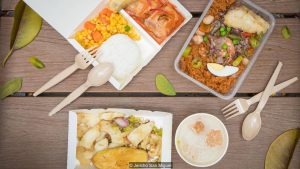
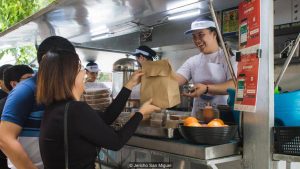

The Jollijeep lunch
Squid sisig, seafood paella and sweet and sour pork, from Jollijeep Lirios (Credit: Jericho San Miguel)
Jollijeeps – semi-permanent food carts – started popping up around Makati City about five years ago, as part of a city initiative to organise and regulate street vendors, says Faith Ragaas, a manager at an investment management firm. Her favourite, Lirios, is a three-minute walk from her office.
“Instead of the normal greasy food that’s sold in plastic on the street, there are a few good Jollijeeps that have become known for providing a healthy, home-made type lunch that gives workers another option than having to go to a restaurant or cafeteria,” she says.
Having three full meals a day is so crucial in the Philippines that the lunch hour is protected by the labour code, says Ragaas, with one hour given to each employee for every eight hours of work.
Francois Pellan / Paris, France



The restaurant lunch
Pollock fish over vegetables at restaurant Le Robinet (Credit: Andrea Neri)
France is known for a generous work lunch culture. The Edenred survey, for example, found 43% of French respondents took 45 minutes or more for lunch, and 72% ate at a restaurant at least once a week.
Parisian product designer and illustrator Francois Pellan usually gets food from a local supermarket and eats together with colleagues in his work’s studio kitchen.
But at least once a week they head out to a restaurant in the 20th arrondissement for an hour or so. At work, he and his colleagues “talk a lot, get other peoples’ point of view on things, exchange ideas. The conversation extends to mealtimes, which are an important social aspect of French life,” the 35-year-old says.
There’s another lunch perk in France too, where the population drank 11.3% of the wine consumed in the world in 2014. “On Fridays when we’re more relaxed, we usually go out to a restaurant together as a group, and have a beer or wine with lunch.”
Tamar Kassabian / Cairo, Egypt
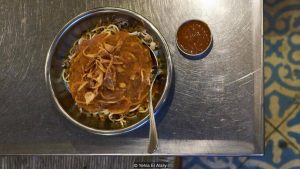


The food court lunch
Koshari, a dish made with rice, lentils, pasta, tomato sauce, chickpeas, fried onions and dukkah at a restaurant in Heliopolis’s food court (Credit: Yehia El Alaily)
“I don’t eat fast food or junk food. So I either pack my lunch or grab something easy from one of the restaurants nearby,” says 31-year-old Tamar Kassabian, who works as a manager in Citystars Heliopolis, one of Cairo’s largest malls.
Since breakfast is typically a substantial meal and eaten late in the morning, Kassabian says lunch often gets pushed back to 3pm or 4pm and dinner might be at 9pm or later.
“Many companies will give 1-2pm as a lunch break, but people will use it to have coffee and the rest of their breakfast, and then take another half an hour for lunch later in the afternoon,” she says.
Kassabian says in the last year or so, workers have started using companies like Yumamia, which bills itself as a “junk-free food delivery service,” to have healthier food delivered to their offices.
Eliza Rinaldi, São Paulo, Brazil
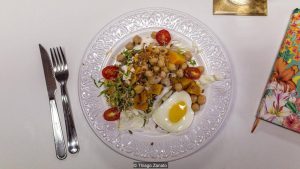


The make-your-own lunch
A veggie-heavy lunch: butternut squash, chickpeas, mixed salad, sunflower seeds, tomatoes and an egg cooked in the microwave
(Credit: Thiago Zanato)
Eliza Rinaldi, prepares healthy ingredients at home and assembles her lunchtime meal at the office, a content agency in central São Paulo where she works as communications and content director. Her business partner Natascha does the same “because it saves money and we’re both health conscious,” says the 34-year-old.
Rinaldi says her routine is not typical in Sao Paulo, where lunch is often the main meal of the day. “Most companies offer meal tickets –credit for food as part of their work package – so people tend to go out for lunch.
“People tend to work long hours in São Paulo [often from 9am-7pm] so it makes sense to take an hour for lunch and get out of the office. People are trying to break the thing of working longer hours, but there is a traditional mentality that if you’re not present you’re not working as hard,” she says.
